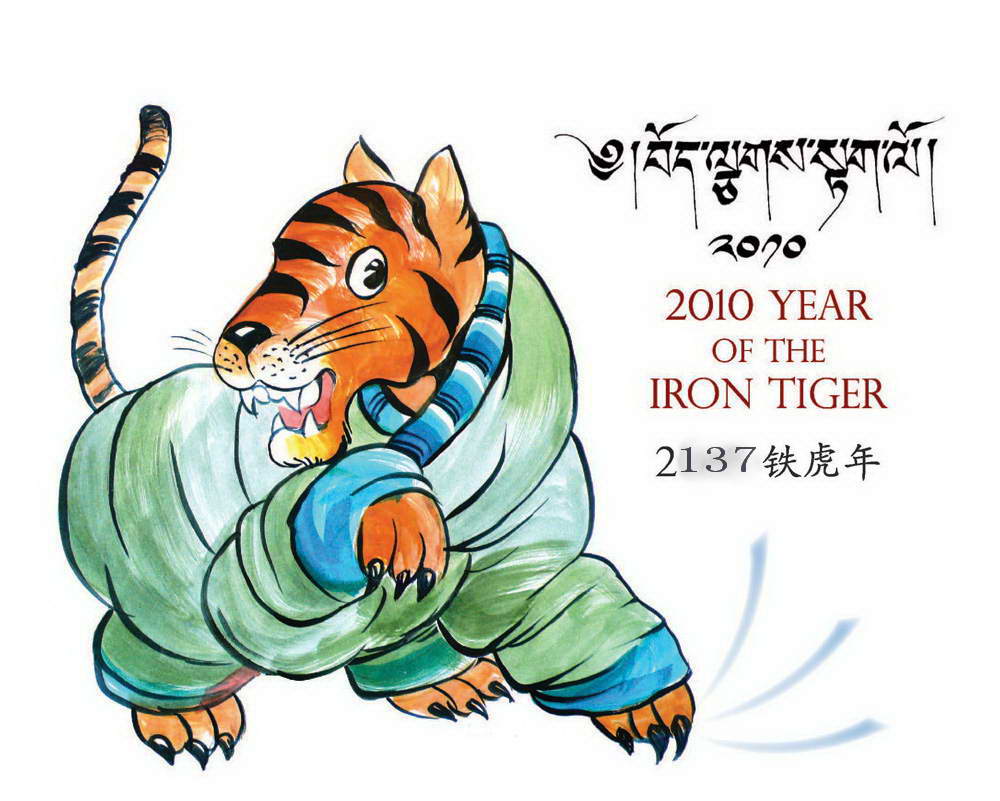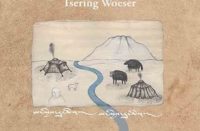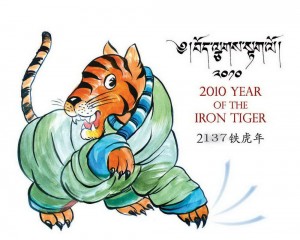High Peaks Pure Earth has translated a blogpost by Woeser that was originally written for Radio Free Asia on February 9, 2010 and posted on her blog on February 14, 2010, which was also the first day of Losar (Tibetan New Year).
I only changed “2010 Year of the Iron Tiger” to “2137 Year of the Iron Tiger”).
The English language Tibet blog High Peaks Pure Earth sharply noted in a post titled “I am Tibetan” that “there has been an upsurge in online activity by Tibetan netizens about being Tibetan and Tibetan identity.” Tibetan video clips, poems and pictures complemented the post as examples and evidence.
When we browse through Chinese video clip websites, which can be accessed without having to “climb the (fire)wall” or when we browse through YouTube, which can only be accessed by having to “climb the (fire)wall”, we get to see one particular video showing Tibetans conveying an aura of the snowy mountains, who use their local Amdo dialect to proudly, freely and firmly express “I am Tibetan”. This makes us without a doubt feel deeply moved and inspired.
This really is “the strongest, and the most creative video from Tibet”. The actually quite simple sentence “I am Tibetan” in fact widely opens up every person’s innermost being and reveals every person’s true character. It is just like the strong message and effect of advertisements, on the one hand, the video draws attention to the people’s differences, and on the other hand, it is like a single spark, which ignites the entire Tibetan homeland and the land of those living far away.
Another video uses standard and elegant sounding Lhasa dialect to emphasise: “‘ka kha ga nga’ (Tibetan alphabet) is my heart and my soul”, repeatedly urging “everybody to come and speak pure Tibetan”. It warns and awakes the Tibetans to realise that our native tongue “has actually been infected by harmful viruses from different languages”. The situation has already turned into a state of desperation; with a feeling of sorrow without self-injury and a feeling of anxiety without protest, this video clip stirs all Tibetans; “to guarantee the further existence of our nationality, let’s all speak Tibetan, let’s all speak pure Tibetan.”
I really like this video; I particularly appreciate the kind-heartedness, the elegance, and the tolerance, which Tibetan civilisation encompasses. There are no sad cries of sheer anguish, no angry voices or hard words, no seeking revenge for an angry look, which one can observe in other cultures that have been damaged by totalitarianism. For instance, in the Chinese national anthem it says, “let our flesh and blood become our new Great Wall!” Similar examples can easily be found. “Everybody come and speak pure Tibetan”, what makes us feel gratified is that in some places of Amdo and Kham during winter and summer holidays, extra teaching activities in Tibetan language are organised for pupils. Some people with breadth of vision who attach great importance upon the teaching of the mother tongue invited a Tibetan teacher, and the local people responded very positively so that the children had ample opportunity to become very familiar with their mother tongue from an early age.
There might be some people who think that the upsurge in comments regarding Tibetan identity seems a little bit extreme; yet, this is in fact the only way to seek survival. Because in reality, such as in Tibetan primary schools, they always play songs in Mandarin instructing “how to properly name relatives”; yet, Tibet actually has its own children’s songs. Tibet also has its own names for relatives; hence, the assimilation has an imperceptible but profound influence upon Tibetan children. For example, at the entrances of many primary schools in Lhasa, one comes across the following slogan: “I am a child of China, I like to speak Mandarin”. The Chinese government clearly disrespects the regional autonomy for nationalities, which it has in fact drawn up itself. Another example could be the past half-century’s “patriotic education”, entirely carried out by various means of force and which “brainwashed” several generations of Tibetans. The goal is to make Tibetans give up their original identity. However, as the Economic Nobel prize winner Amartya Sen wrote in his book ‘Identity and Violence: the Illusion of Destiny’: “the organised implementation of classified identities is often the prelude to persecution and killings”.
A Chinese mainstream academic bluntly summarised in an article titled “Discussion of the Aim of the Fusion of China’s Ethnic Groups”, “the development of China’s diverse ethnic groups has in fact one precise aim, which is to establish the Han Chinese identity as an overall Chinese national identity and this identity is not encompassing each of the 56 ethnic groups in the modern sense, it is merely consisting of one main ethnic group. In a nutshell, it might as well be called “hua zu” of Chinese descent identity…” Whereas “when the fusion of various ethnic groups reach a certain phase, it is simply a matter of technological problem to change IDs.” However, Tibet, which is also supposed to be “fused” does not at all approve of this imposed identity, hence, it has raised its increasingly resonant voice: “I am Tibetan!” Let me add one more sentence. Apart from declaring, “I am Tibetan”, Tibetans must also know: Today, what else do we have? What have we lost today? This is essential.
February 9, 2010, Beijing






Follow Us!